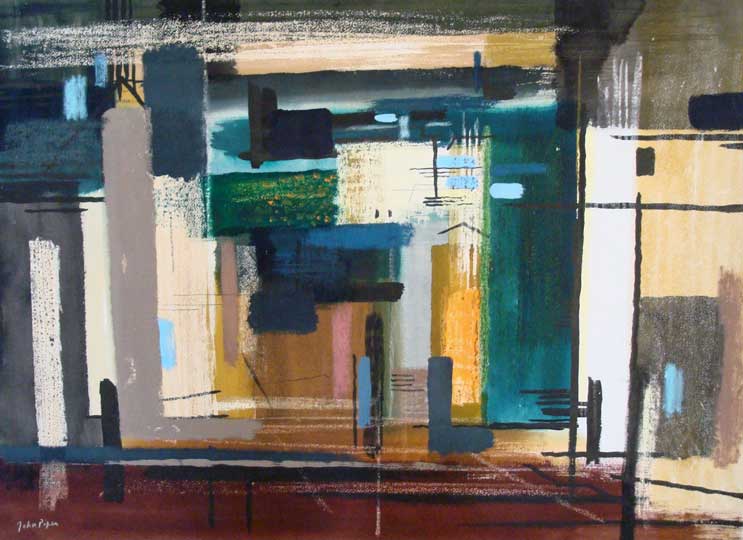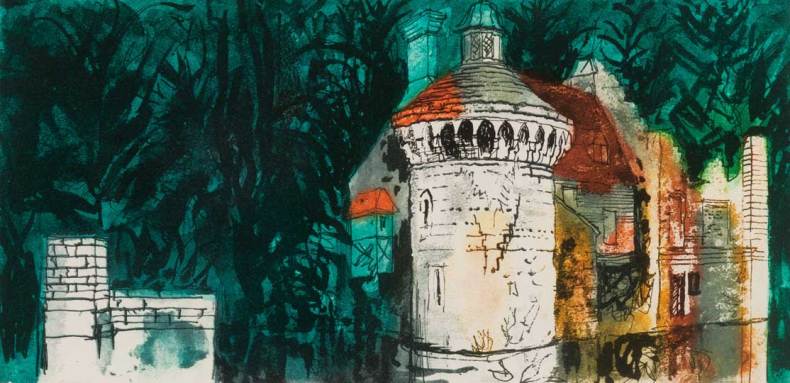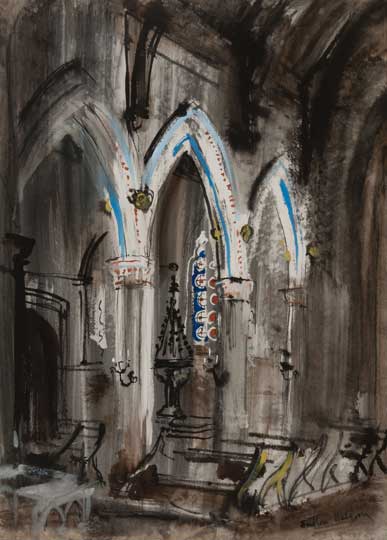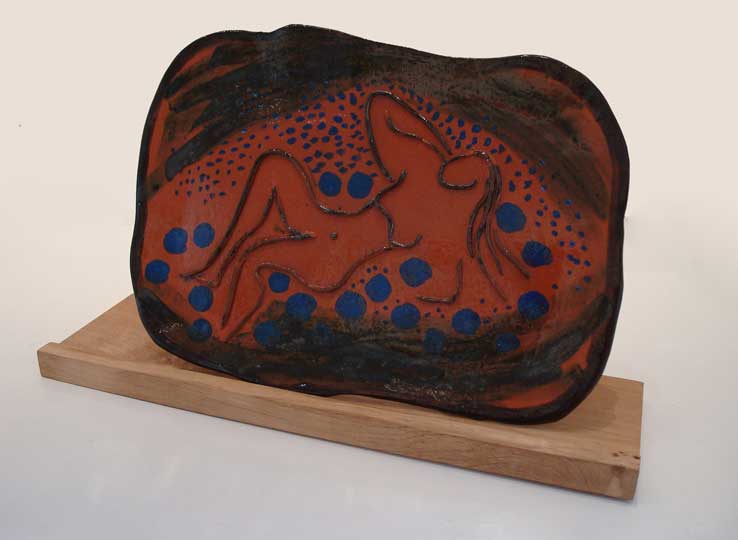As hawthorn bushes burst into bloom and convertibles speed round country lanes, it’s easy to dream up ‘memories of halcyon days, and [to] revere the voice that makes them real.’ This phrase of John Betjeman’s is lightly cynical, but it reveals a desire to invoke some elemental essence of Englishness. And no-one, perhaps, deserved more reverence for making such a thing ‘real’ than Betjeman’s close friend and collaborator on the Shell County Guides, the artist John Piper.
So, equip yourself with a 1938 copy of Oxon, Piper’s first Shell Guide, and take a trip to Henley-on-Thames for a new exhibition of the artist’s paintings, ceramics, textiles and prints at Bohun Gallery. Bohun holds a long association with Piper, who lived in the Henley area for most of his working life. Gallery director Patricia Jordan Evans was the first to exhibit the unusual ‘Eye and Camera’ series in 1975, screenprints that play on the colours and techniques of Pop Art. Since then, the gallery has staged regular displays of Piper’s work, as well as the major loan exhibition ‘Piper and the Church’, hosted at Dorchester Abbey, Oxfordshire, in 2012.
Piper is famed for his neo-Romantic landscapes, views of ruined churches, stately homes and castles. Highlights of the exhibition include a full set of Scotney Castle etchings, as well as a virtuosic mixed media interior of Sutton Waldron in Dorset, coloured inks on monochrome indicating the church’s idiosyncratic arches inspired by the Alhambra. However, as the double-sided canvas in the window of the gallery suggests, this is a multi-faceted exhibition. Its guiding force is the extraordinary diversity of Piper’s practice, whether in terms of subject matter, aesthetic or technique.
This is an artist whose commissions encompassed projects as diverse as stained glass windows, fabric designs, and firework displays. Works on show range from ceramics created in collaboration with Geoffrey Eastop, to prints of mysterious Foliate Heads, to stage designs for Britten’s Gloriana, and even a gleefully theatrical lithograph for the J. Lyons ice-cream parlour chain. Perhaps the most striking item in the exhibition is a rare abstract painting, Townscape (1958), in which architectural layers of colour and linear brushwork lead the eye through the composition, as though through city streets.
Piper’s work is the expression of a uniquely indigenous modernism – one which viewed the artistic experimentation on the continent through leisurely binoculars, but whose aesthetic loyalties were rooted in home soil. In other words, representation over abstraction, and a certain degree of visual eclecticism. In his essay ‘Abstraction on the Beach’ (1938), Piper declared that ‘pure abstraction is undernourished: it should be allowed to feed on a bare beach with tins and broken bottles.’ This process of salvage, of reconstituting fragmented forms, was literalised in his commissions as an official war artist, prompting Betjeman to declare: ‘you have saved much of England by your pictures of architecture and landscape.’
Yet, as ‘Abstraction on the Beach’ suggests, Piper’s practice was not simply about saving the past, but of redefining it. An age of disintegration required an art founded on a common humanity, made for the present. For Piper, ‘the point is fullness, completeness: the abstract qualities of all good painting together with the symbolism (at least) of life itself.’ This small but exceptionally ambitious exhibition is an expression of that vision, in all its diversity.
‘John Piper: Paintings, ceramics, textiles and prints’ is at Bohun Gallery from 3 May–7 June 2014.
Unlimited access from just $16 every 3 months
Subscribe to get unlimited and exclusive access to the top art stories, interviews and exhibition reviews.















![Masterpiece [Re]discovery 2022. Photo: Ben Fisher Photography, courtesy of Masterpiece London](http://www.apollo-magazine.com/wp-content/uploads/2022/07/MPL2022_4263.jpg)
Has the Fitzwilliam lost the hang of things?